Some crochet stitches can take on a different feel and appearance if worked in a different direction. One such stitch is the Thermal Stitch.
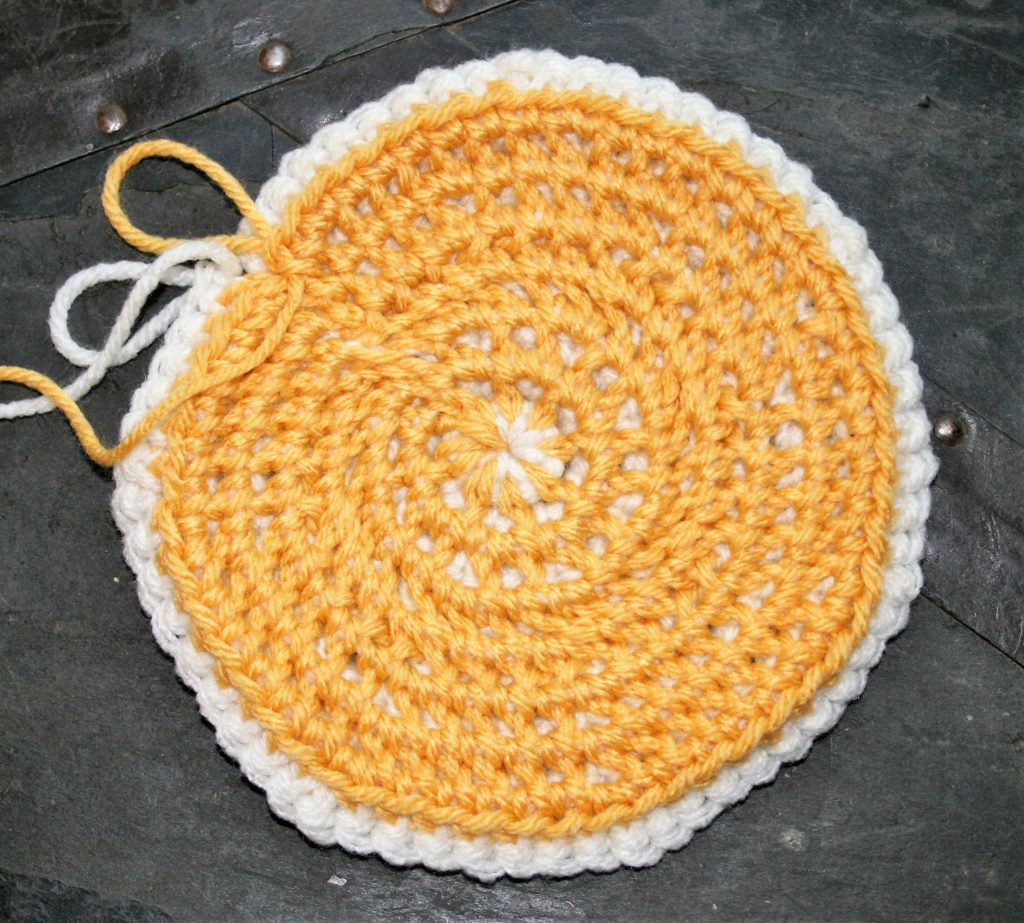
This stitch creates a dense double layer fabric that has a unique honeycombed or waffled effect, which reminds me of long-johns with little indented squares. To learn the traditional method of this stitch technique check it out in this tutorial.
I pick up this stitch again recently and begun playing with it in the round. This stitch is typically worked at only half the row height increase of the single crochet stitch, working in both its on row stitch and the one adjacent. As a result of this one, stitch stacked upon one stitch approach it takes a bit of thinking to work the flat circular increases.
The first hurdle is to actually begin the round. You really need to work 2 rows of fabric in the same beginning stitches to ensure an even fabric consistency throughout. I have found two approaches to this in the round.
Please note that I worked this fabric as a different color on each side, as it really helped me to keep the process understandable. In doing such I would drop the color, leaving the working loop for the color live and pick up the new color, switching like this between every Round. In addition, I worked the entire fabric in a spiral method, meaning I did not join the rounds when completed, I simply began the next stitches in the next round. This was also so ease of keeping track of my location in the work. I have to play a bit more with the end of the Rounds, as even working in a spiral they appear to easily as the stitches become a bit clustered and dense, but it does allow for the thermal stitch to be created.
Beginning:
Method one: The magic loop/ring/circle. Essentially this technique involves making a loop of yarn and crocheting in this loop, like when crocheting over item (like the demonstration here making holiday wreaths).
Round 1: Work 8 single crochets into the loop (color cream), turn.
Round 2: Drop color from round one, join new color (color yellow). Working between stitches in between the stitches of Round 1, [insert your from behind the magic ring, and through the top loop closest to you in Round 1….this feels a bit awkward, but essentially what you are doing is inserting your hook into the bottom ring and the loop of the stitch in round 1, yo, pull through a loop, yo, pull through 2 loops] repeat 8 times, turn. -8 sts
Pull ring closed.
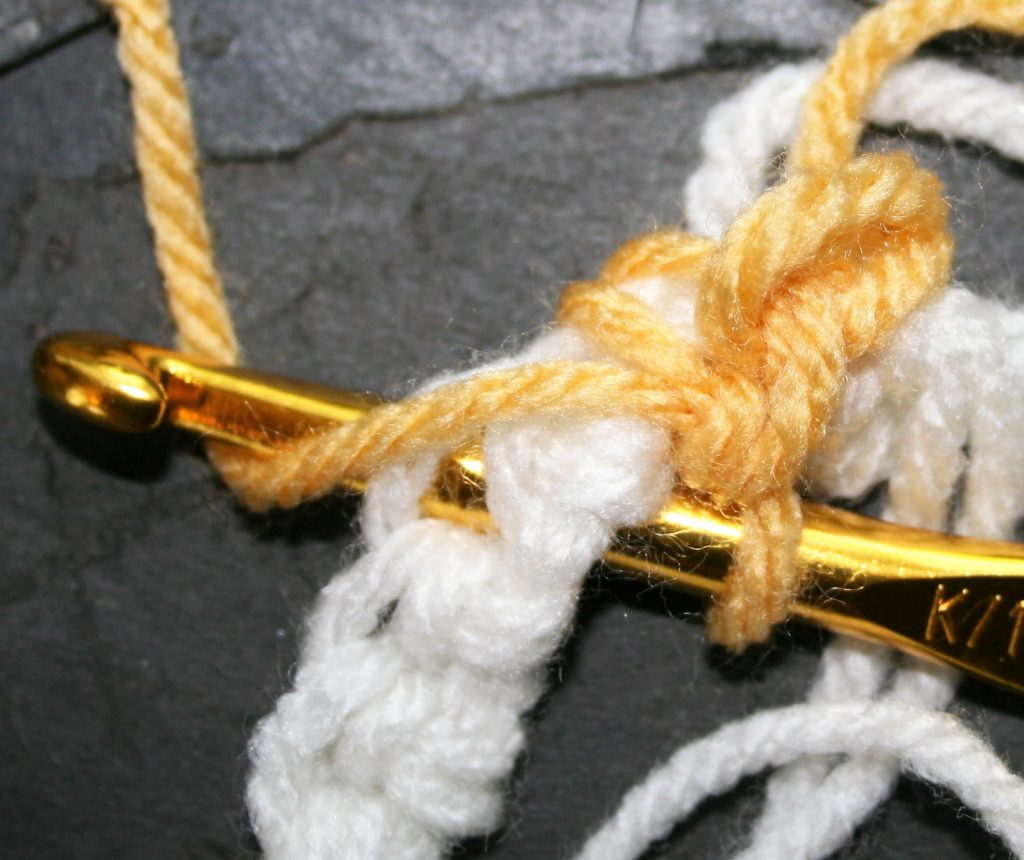
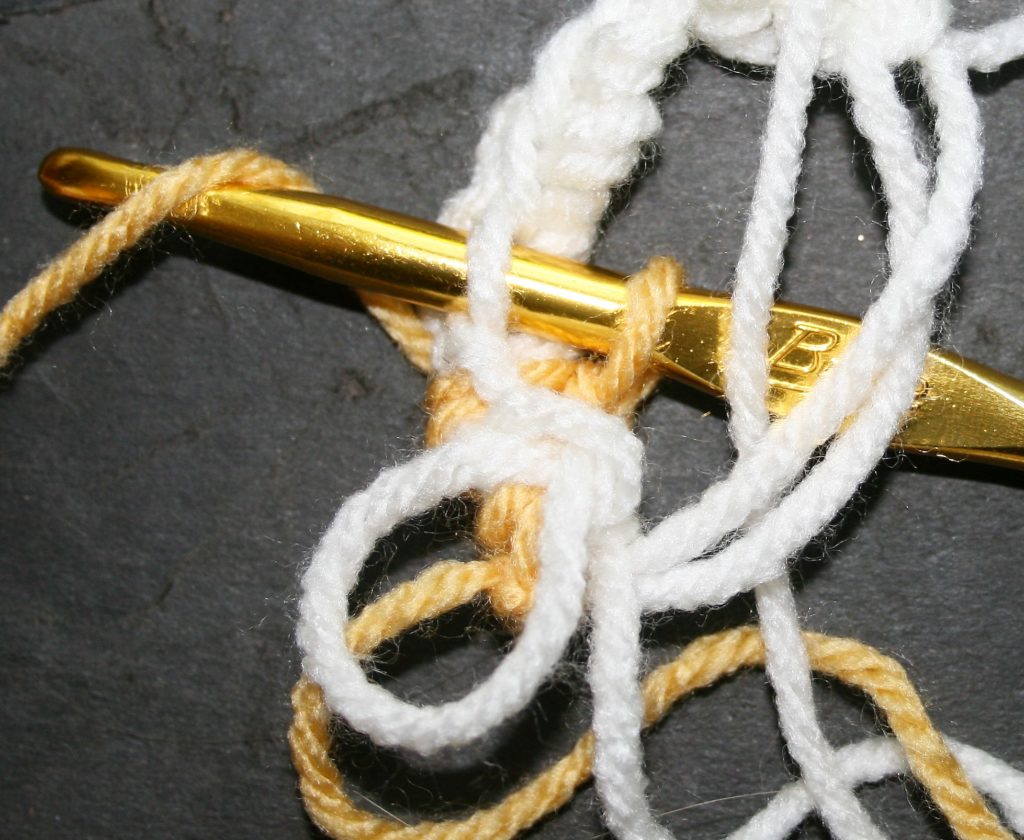
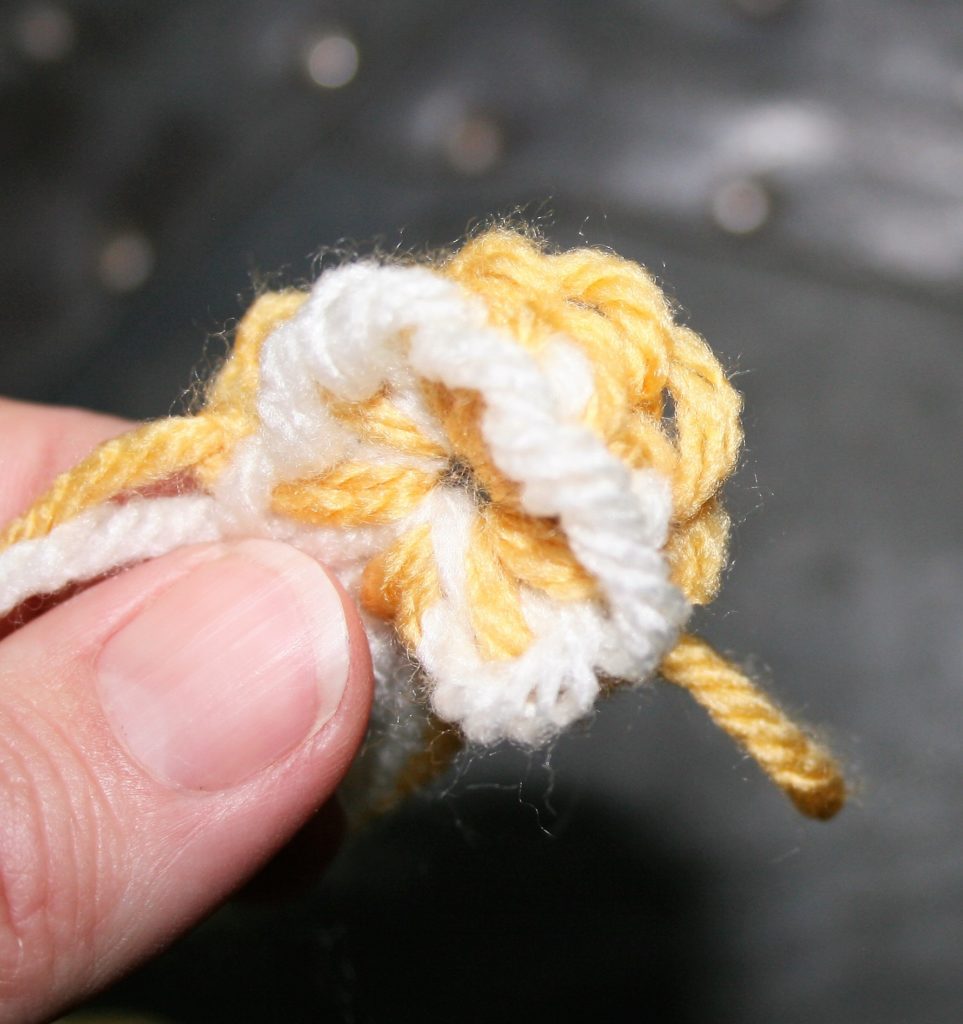
Method two: Working into a ring. Chain 4, and slip stitching to the first chain to form a ring.
Round 1: Ch 1, 8 sc in ring (color white), turn. -8 sts
Round 2: Drop color from Round 1, join new color (color yellow) to one “leg” of the single crochet stitch, insert hook through same point as join and the top loop closes to you of Round 1, yo, pull through a loop, yo, pull through 2 loops, [insert hook into one “leg” of next single crochet and the top loop of next stitch, yo, pull through a loop, yo, pull through 2 loops] 7 times, turn. -8 sts
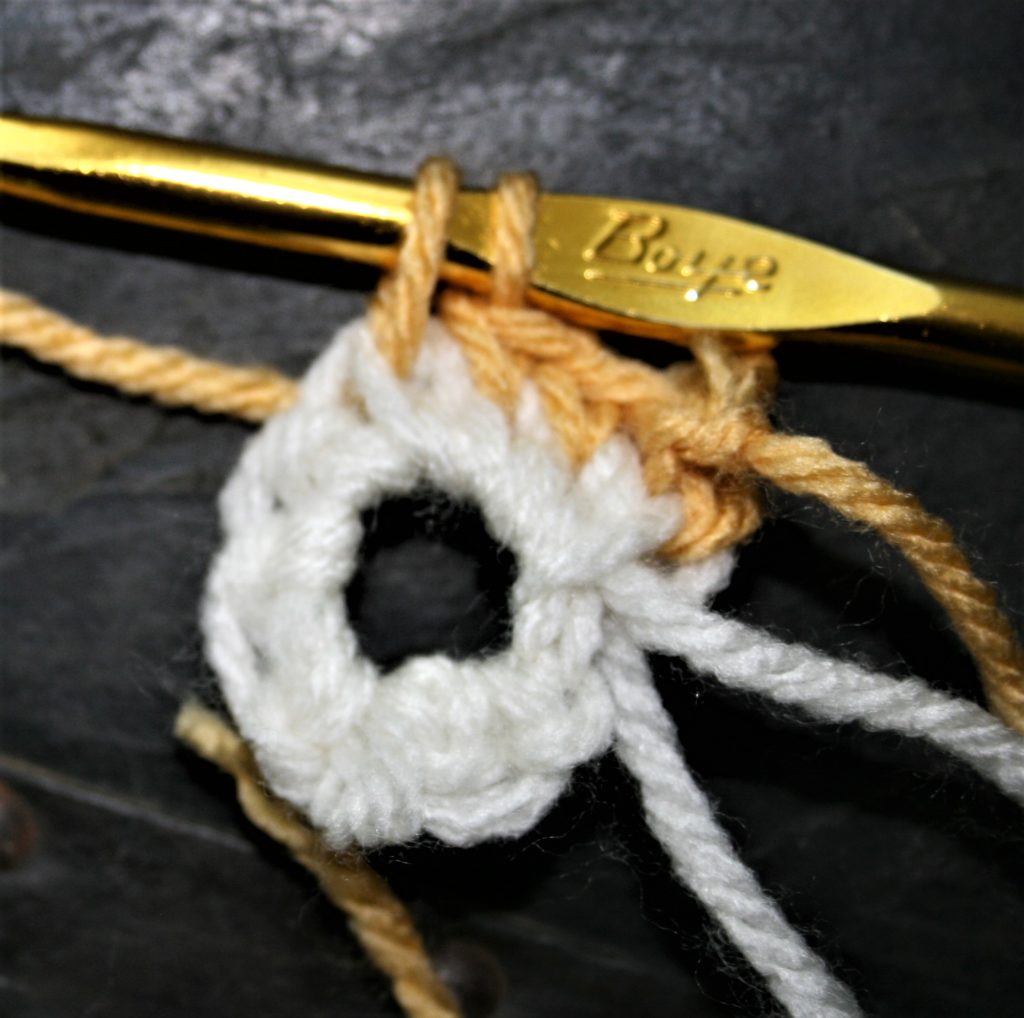
All Subsequent Rounds….Working the Increases
Increases need to happen in each Round, but you are essentially working the same increase for 2 rounds. Meaning that the stitch count for Rounds 3 and 4 will be in same, the same number of stitches are worked in the white, the same number in the yellow….like working two separate fabrics at once. However the increases are slightly different in approach.
Round 3: Dropping yellow and picking up white, insert hook through the front loop of Round 1, and the top loop closest to you in Round 2, yo, pull through, yo, pull through 2 loops, insert hook into same location as stitch just made and rework stitch, this is your increase. Work 2 thermal stitches in each stitch around, turn. -16 sts
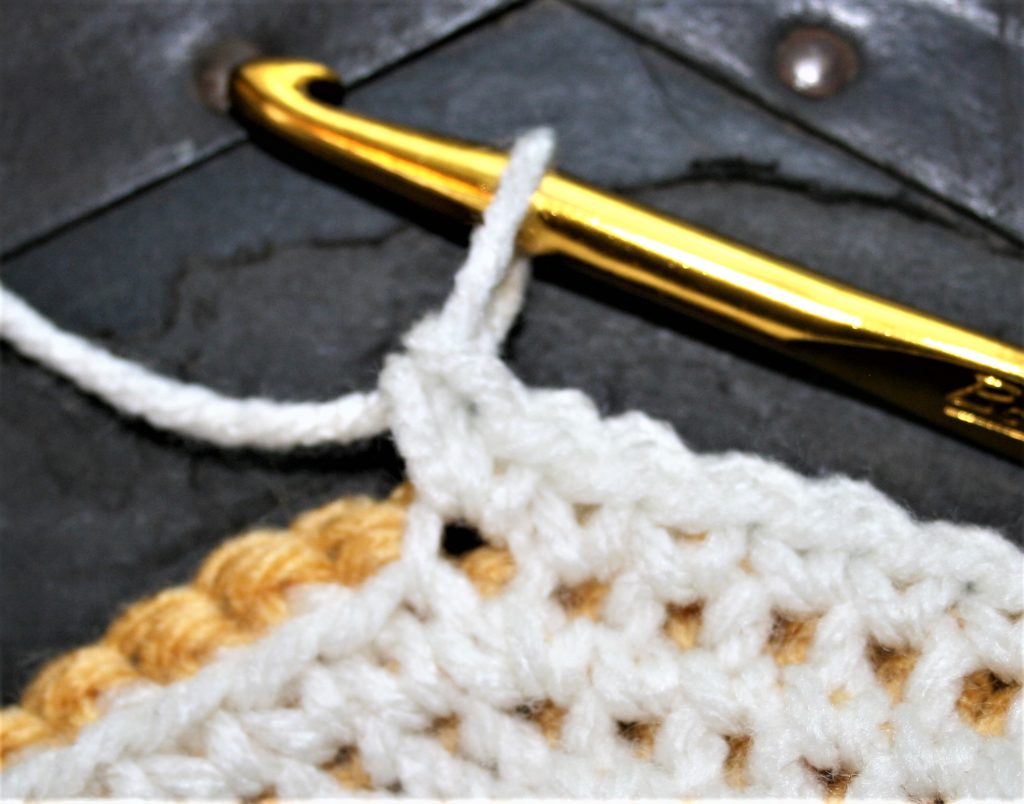
Round 4: Dropping white and picking up yellow, [insert hook through the front loop of Round 2 and the top loop closest to you in Round 3, yo, pull through, yo, pull through 2 loops, insert hook into the same front loop of Round 2, and next top loop closest to you in Round 3 (note there are already twice as many stitches in Round 3 as there are in Round 2…so there are less front loops to work into then there are completed stitches, as a result you need to increase Round 4 by working 2 stiches in the same Front loop, but do not in the top loop closest to you)] repeat 7 times, turn. -16 sts
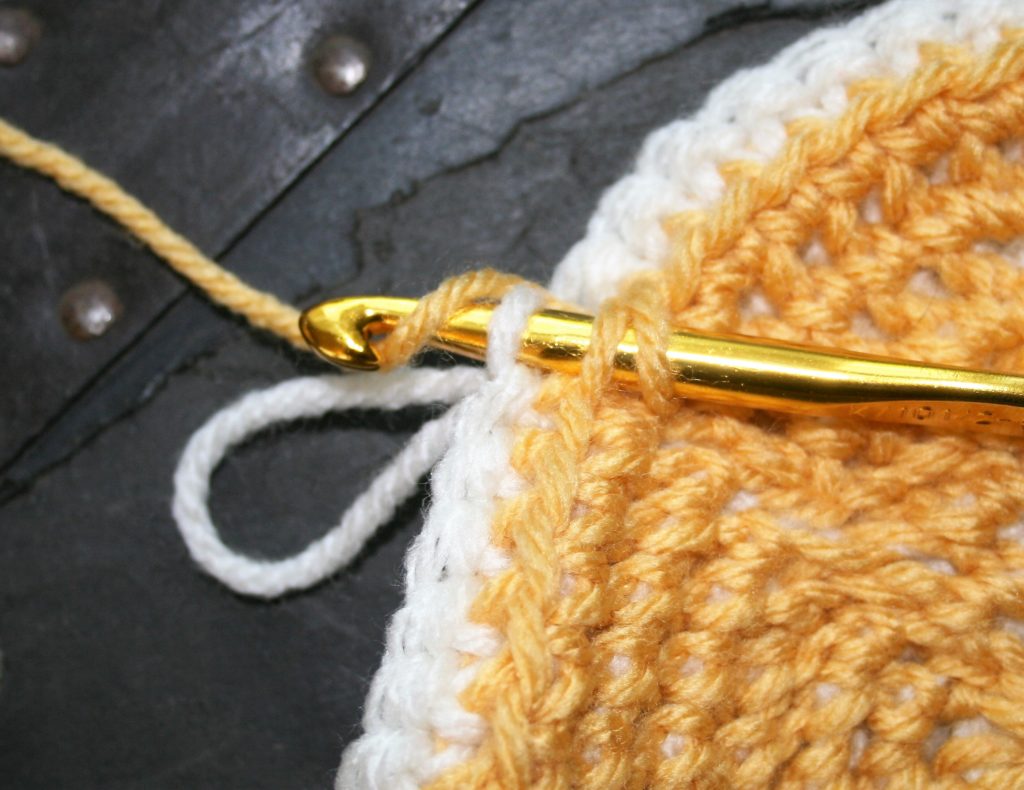
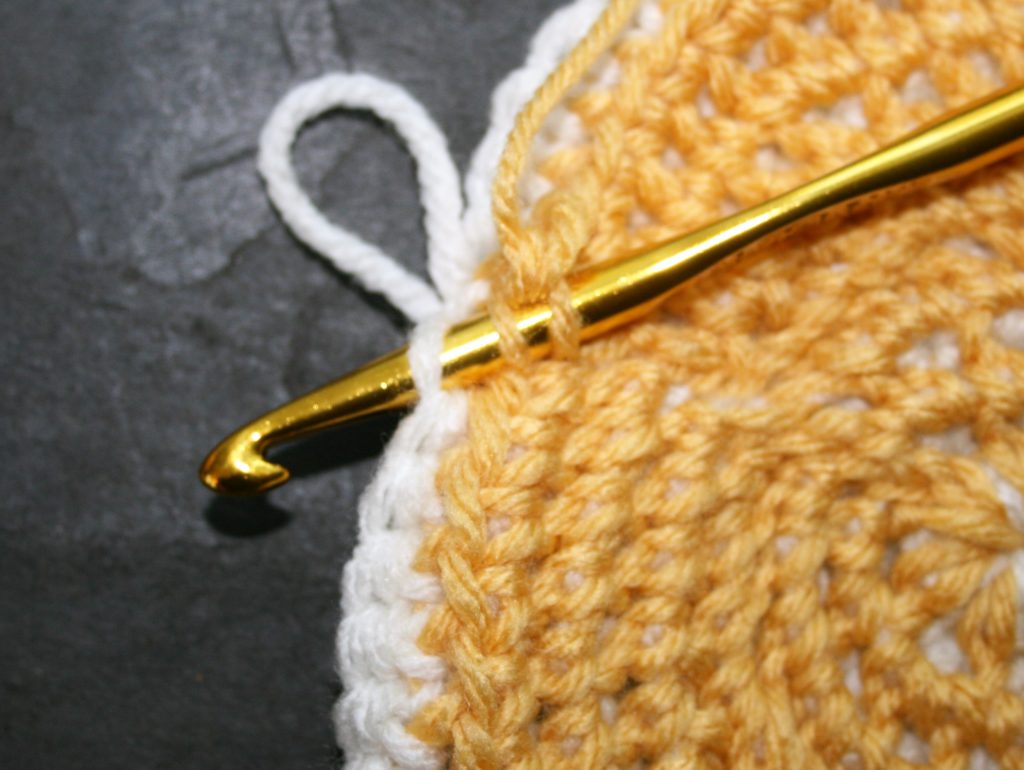
You work the same formula for a flat circle (you can find that here), in all the rounds going forward. I tend to think of the rounds in sets, a pair of one odd round and one even round (Round 1 & 2, Round 3 & 4, Round 5 & 6, etc.) Working all increases in Odd number rounds by working into the same front loop and the same top loop closest to you. Working all Even Round increases as the same front loop but different top loop closest to you. All non-increase stitches are worked as traditional Thermal Stitch (see tutorial for basic stitch)
This subtle difference in the increases between the rounds is one reason the different colors helped me. I could remember that every time I used the yellow yarn I was doing an even number Round increase.
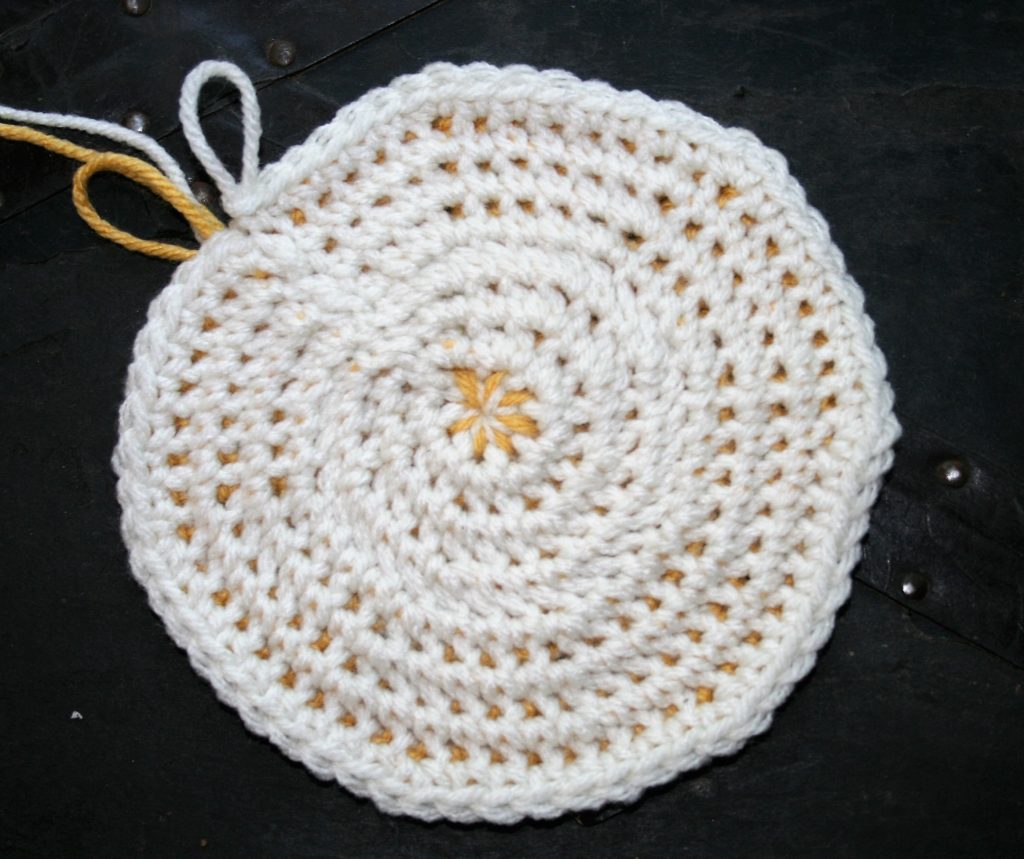
This process takes a bit of practice, but the resulting fabric has a nice textured look, and the dense nature lends itself nicely to pot holders, trivets, wash scrubby, I could even see a nice warm hat in the future.
